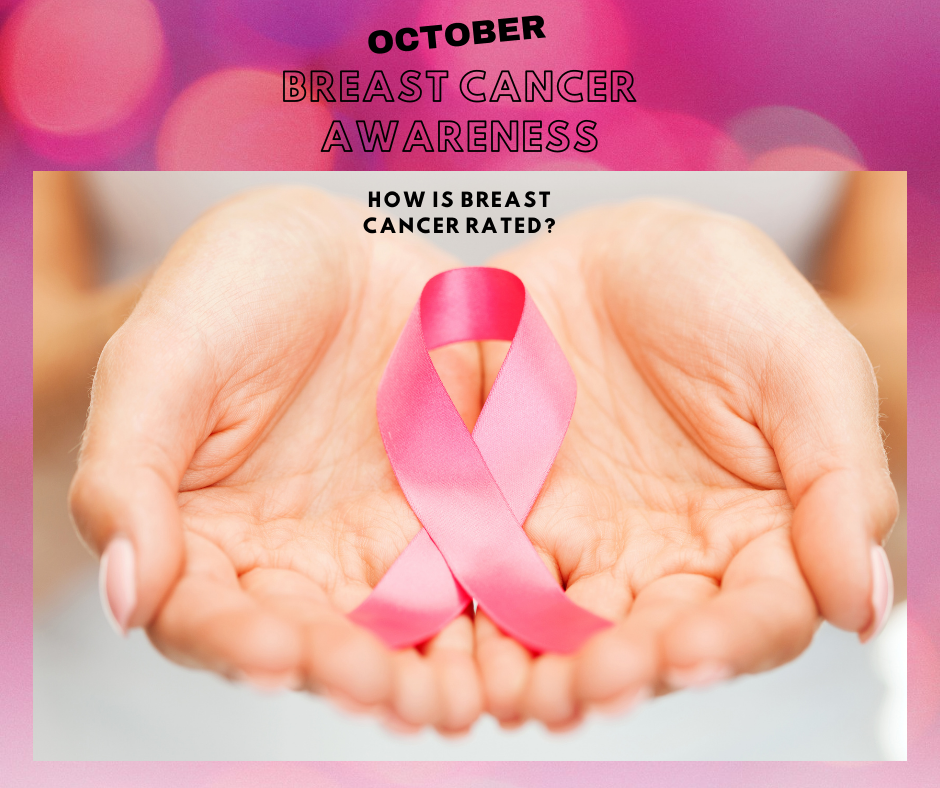
Table Of Contents
Breast Cancer
October is Breast Cancer Awareness Month. Breast cancer is the second leading cause of cancer death in women, following lung cancer. About 1 in 8 U.S women will develop breast cancer over the court of a lifetime. Female veterans experience breast cancer at a significantly higher rate than women who did not serve – by as much as 40%.
What is Breast Cancer?
Cancer occurs when changes, called mutations, take place in genes that regulate cell growth. The mutations let the cells divide and multiply in an uncontrolled way. Breast cancer is cancer that develops in breast cells. Typically, the cancer forms in either the lobules or the ducts of the breast. Cancer can also occur in the fatty tissue or the fibrous connective tissue within the breast.
In its early stages, the cancer may not cause any symptoms. In many cases a tumor may be too small to be felt but an abnormality can still be seen on a mammogram.
The first symptoms of breast cancer typically appear as an area of thickened tissue in the breast or a lump in the breast or armpit. Other symptoms include:
- Pain in the armpits or breast that does not change with the monthly cycle
- Pitting or redness of the skin of the breast
- A rash around or on one of the nipples
- Discharge from a nipple
- A sunken or inverted nipple
- A change in the size or shape of the breast
- Peeling, flaking, or scaling of the skin on the breast or nipple
Stages
A doctor stages cancer according to the size of the tumor and whether it has spread to lymph nodes or other parts of the body. The most common way to stage breast cancer is from stage 0-4:
- Stage 0: Known as ductal carcinoma in situ (DCIS), the cells are limited to within the ducts and have not invaded surrounding tissue
- Stage 1: The tumor measures up to 2 centimeters across. It has not affected any lymph nodes or there are small groups of cancer cells in the lymph nodes.
- Stage 2: The tumor is 2cm across, and it has started to spread to nearby nodes, or is 2-5 cm across and has not spread to lymph nodes.
- Stage 3: The tumor is up to 5cm across, and it has spread to several lymph nodes or the tumor is larger than 5m and has spread to a few lymph nodes.
- Stage 4: The cancer has spread to distant organs, most often the bones, liver, brain, or lungs.
How to Get VA Disability Rating?
To establish a service connection for breast cancer veterans must demonstrate: (1) a current diagnosis of the cancer; (2) an in-service event, injury, or illness; and (3) a medical link between the current diagnosis and in-service event.
How is It Rated?
Active cancer of the breast is rated at 100%. The 100% rating will continue for the first 6 months after the last treatment. At this time the condition will be reevaluated and if it is no longer active then it will rated on any lasting symptoms or complications.
One of the common lasting complications is the removal of the breast. The removal or the entire or a portion of the breast is rated based on the extent of the surgery.
| Rating for One Breast | Rating for Both Breasts | Symptoms |
| 50% | 80% | A radical mastectomy or removal of the entire breast, including the pectoral muscle underneath and the lymph nodes. |
| 40% | 60% | A modified radical mastectomy or the removal of the entire breath with the lymph nodes but not the pectoral muscle |
| 30% | 50% | A simple or total mastectomy or the complete removal of the breast tissue, nipple, and some of the skin around the breast but not the lymph nodes or muscles |
| 30% | 50% | Wide local excision or the removal of only a portion of breast tissue which causes the size and shape of the breast to change significantly |
| 0% | 0% | Wide local incision with no significant change in the size or shape |
Veterans Help Group have been supporting veterans in getting the benefits they deserve since 1995. If you or a loved one served, and suffer from breast cancer, we are here to help. Call Veterans Help Group at 855-855-8992 or complete our free veterans benefits case evaluation form.

Congress Aims To Streamline Community Care For Veterans
Congress Aims To Streamline Community Care For Veterans Obtaining approval to see a doctor outside...

Major Victory: VA Invests Over $800 Million to Fight Veteran Homelessness
Major Victory: VA Invests Over $800 Million to Fight Veteran Homelessness The Department of...

What is the VA DBQ?
What is a VA DBQ? A VA Disability Benefits Questionnaire (DBQ) is a form used to convey medical...





